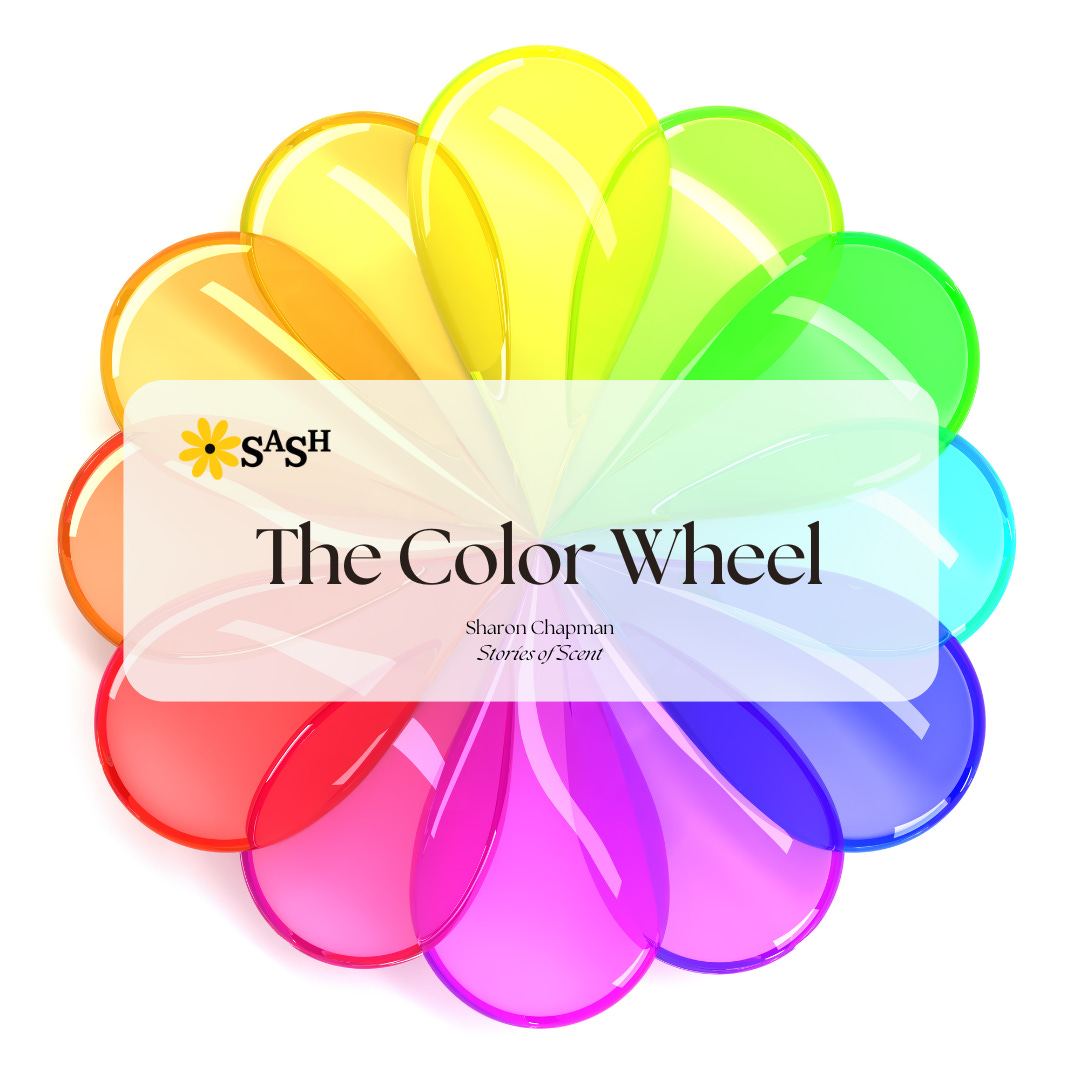A few weeks ago, I started on my quest to develop a reimagined botanical scents fragrance wheel. If you’re just joining us, you can find the original post here:
Making a Botanical Scents Fragrance Wheel
This week, we are starting a new journey - and a new project - after over a year of getting to know Scent Word Families(TM). If you are familiar with the world of perfumery, you have no doubt heard of fragrance families (not to be confused with my own Scent Word Families(TM)) and/or the fragrance wheel. Both are tools to understanding how scents are cla…
The aim of this project is to reimagine the traditional fragrance wheel used by perfumers and make one that is suited specifically to botanical scents - used by botanical perfumers and aromatherapists.
I’ve added a couple of categories to this new wheel already including floral and vintage. Before we move onto the next category, I wanted to take a moment to compare the fragrance wheel to the color wheel to help you understand more about where I am going with this project.
What is the Color Wheel?
In simple terms, the color wheel is a comparison of visual relationships whereas the fragrance wheel is a comparison of olfactory relationships. Both are tools in helping the artist visualize their creative project, albeit with different senses.
The color wheel is made up of three primary colors (blue, red, yellow), three secondary colors (orange, green, purple or cyan, magenta, and yellow in the RYB color wheel) and six tertiary colors (red-orange, yellow-orange, yellow-green, blue-green, blue-violet, and red-violet) [1].
What I find really interesting about the color wheel is that primary colors are your “base camp,” a little like what I am doing with the floral element of my Botanical Scents Fragrance Wheel. They create pure white light if combined [1] and cannot be mixed from other colors. The combination of two of these primary colors create the secondary colors. Combine secondary colors with primary colors and you get the tertiary colors.
It gets even more complex, when you consider the various color combinations available in categories described as complementary, monochromatic, analogous, triadic, and tetradic.
Why Understanding the Color Wheel Helps with the Fragrance Wheel
You might be wondering why I am explaining all of this about the color wheel. How does the color wheel help with understanding the fragrance wheel (and subsequent reimagining of it in a botanical scents fragrance wheel)? Here’s why:
Both types of wheels are invaluable tools to the artist; the only difference is the use of sense (visual vs olfactorily)
Both types of wheels help you to understand the relationships between different categories of colors or scents
Just as some colors work best side by side, some scents work best side by side BUT
opposites sometimes attract! Something on the opposite side of the wheel may work well with its opposite, depending on the end goal of the project.
I recently went through choosing paint colors for the exterior of my new home. These were some of the questions that I had to ask myself:
Do I want bold, fun colors?
Do I want more traditional colors?
Which part of the exterior do I want to shine the most/emphasize the most?
What story am I trying to tell with the colors?
These are the same sort of questions that I ask myself when creating a new fragrance. So, color vs fragrance? There are a lot of similarities between the two concepts! Understanding the color wheel - from a creative mindset - might just help you become a better perfumer…
I hope that this article has given you food for thought as an artist.
Next week, we’ll be taking a look at the third category in my reimagined botanical scent fragrance wheel. See you then!
BONUS: I will also be including a separate bonus wheel for paid subscribers!
Please drop a heart below if you like this article, forward it to a friend, or invite someone to subscribe (and perhaps get a free month’s paid subscription for doing so!).
What did you learn from this article? Drop me your thoughts in the comments below.
References:
Canva. Color Wheel: Color Theory and the Color Wheel. Accessed June 23, 2025.
““I dream a lot, in colour and in sound and scent.”
Joanne Harris, British Author






